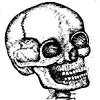5.2: Carbohydrates
- Page ID
- 24151
Carbohydrates
Carbohydrates include sugars and starches and are composed of monosaccharide building blocks. Glucose is a simple sugar, a monosaccharide. Fructose is a monosaccharide found in honey, tree fruits, berries, and many vegetables. It is the sweetest naturally occurring sugar.
Two simple sugars joined together form a disaccharide. An example of a disaccharide is sucrose (table sugar) which is formed by glucose + fructose. Lactose, also known as milk sugar, is a disaccharide composed of a galactose and a glucose molecule. The enzyme, lactase is required to break down lactose into its two monosaccharide sugars. Lactase is normally secreted by intestinal cells. In many people, the production of lactase diminishes with age and they become lactose intolerant.
Starches are polysaccharides which contain many linked sugar molecules.
Benedicts Test for Sugar
Reducing sugars (most 6 carbon sugars) react with a copper containing reagent called Benedict's. Benedict's reagent is blue, but when heated in the presence of a reducing sugar, changes color. Green, yellow (+sugar), orange (++ sugar), or red (+++ sugar).
Materials
- Benedict's reagent
- Wax pencil
- Test-tubes and rack
- 70oC water bath
Hypothesis
Hypothesize about which substance(s) will produce a color change in the Benedict's test.
Procedure
- Label test-tubes 1 – 6.
- Draw a line 1 cm from the bottom of each test tube and another line 2 cm from the bottom of each tube.
- Fill in Table 1 to specify which tube will receive which test substance.
- Add the appropriate test solution to the level of the 1 cm line.
- Add Benedict's reagent to the 2 cm line of each tube. Mix gently. Record initial color in Table 5.1. This is the color after Benedict’s reagent has been added but before heat.
- Boil, or heat tubes in the hot water bath for 5 minutes. Record data in the table
| Tube | Contents | Color before heating | Color after heating | Check if sugar resent | Name of sugar (section 5.2) |
|---|---|---|---|---|---|
| 1 | Distilled water | ||||
| 2 | Glucose | ||||
| 3 | Egg white | ||||
| 4 | Milk | ||||
| 5 | Orange Juice | ||||
| 6 | Unknown |
Analysis
- The aspect that varies between test-tubes in the experiment is the experimental (independent) variable. Identify the experimental variable in the experiment.
- The negative control group provides the baseline to which the experimental group is compared. The control group is often a "no treatment" condition. Identify the negative control in the experiment. (Choose from column marked Contents in Table 5.1)
- The positive control treatment provides a known effect or response in the experiment. Identify the positive control in the experiment. (Choose from column marked Contents in Table 5.1)
- Controlled variables are extraneous factors that are kept constant to minimize their effect on the outcome of the experiment. The volume of Benedict's reagent added to each tube is a controlled variable. Identify 3 additional controlled variables.
- The dependent variable changes in response to the experimental variable and is used to assess the experimental outcome. Identify the dependent variable.
- Do your results support your hypothesis? Explain.
Iodine test for starch
Lugol's reagent (IKI) is an amber color which, in the presence of starch, turns dark blue.
Materials
- Wax pencil
- Test-tubes and rack
- Potassium iodide (IKI)
Hypothesis
Hypothesize about which substance(s) will produce a color change with the iodine test.
Procedure
- Label test tubes 1 – 6.
- Draw a line 1 cm from the bottom of each test tube (use a wax marker).
- Add the appropriate test solution to the level of the 1 cm line. If using potato or onion piece, or paper, a test tube is not required.
- Add 3 drops of IKI (iodine). If using potato or onion piece, or paper, the IKI can be dropped directly onto the substance.
- Record data in the table
| Tube | Contents | Final Color | Check if starch present |
|---|---|---|---|
| 1 | Distilled water | ||
| 2 | Glucose | ||
| 3 | Potato Juice | ||
| 4 | Milk | ||
| 5 | Egg White | ||
| 6 | Unknown | ||
| *no tube required | Paper Towel* | ||
| *no tube required | Pasta * |
Analysis
Did your results support your hypothesis? Explain.


